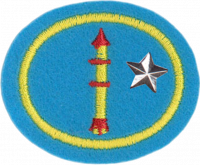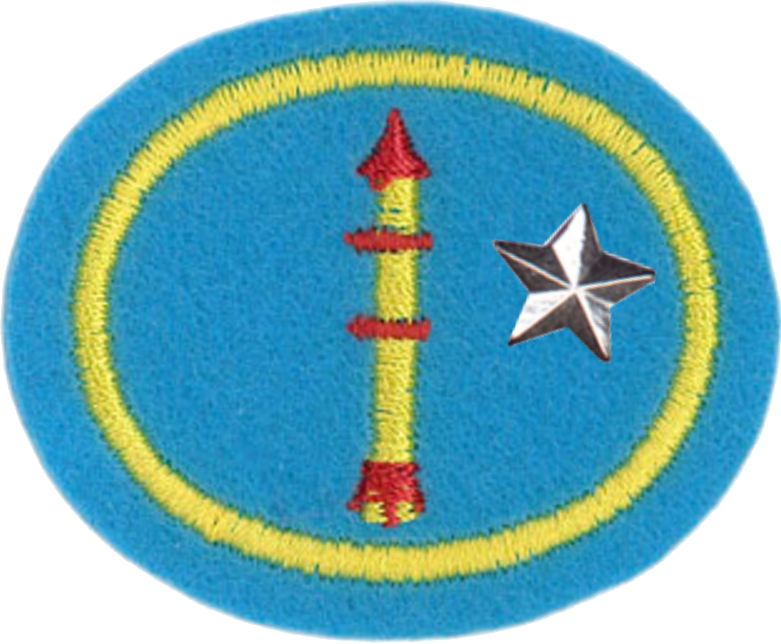Difference between revisions of "AY Honors/Model Rocketry - Advanced/Answer Key/es"
From Pathfinder Wiki
< AY Honors | Model Rocketry - AdvancedAY Honors/Model Rocketry - Advanced/Answer Key/es
(Created page with "</noinclude> <!-- 1. Tener la especialidad de Cohetemodelismo. --> {{honor_prerequisite|honor=Model Rocketry|displayname=Cohetemodelismo}}") |
(Updating to match new version of source page) |
||
| (9 intermediate revisions by 2 users not shown) | |||
| Line 1: | Line 1: | ||
{{HonorSubpage}} | {{HonorSubpage}} | ||
| + | |||
<section begin="Body" /> | <section begin="Body" /> | ||
{{ansreq|page={{#titleparts:{{PAGENAME}}|2|1}}|num=1}} | {{ansreq|page={{#titleparts:{{PAGENAME}}|2|1}}|num=1}} | ||
| Line 6: | Line 7: | ||
{{honor_prerequisite|honor=Model Rocketry|displayname=Cohetemodelismo}} | {{honor_prerequisite|honor=Model Rocketry|displayname=Cohetemodelismo}} | ||
| − | + | <noinclude></noinclude> | |
| − | <noinclude | ||
| − | |||
{{CloseReq}} <!-- 1 --> | {{CloseReq}} <!-- 1 --> | ||
{{ansreq|page={{#titleparts:{{PAGENAME}}|2|1}}|num=2}} | {{ansreq|page={{#titleparts:{{PAGENAME}}|2|1}}|num=2}} | ||
| − | <noinclude> | + | <noinclude></noinclude> |
| − | </noinclude> | + | <!-- 2. A partir de un kit, construir, lanzar y recuperar con éxito un planeador de empuje. --> |
| − | <!-- 2. | ||
| − | |||
| − | |||
| − | + | {{clear}} | |
| − | |||
| − | |||
| − | + | <noinclude></noinclude> | |
| − | <noinclude | ||
| − | |||
{{CloseReq}} <!-- 2 --> | {{CloseReq}} <!-- 2 --> | ||
{{ansreq|page={{#titleparts:{{PAGENAME}}|2|1}}|num=3}} | {{ansreq|page={{#titleparts:{{PAGENAME}}|2|1}}|num=3}} | ||
| − | <noinclude> | + | <noinclude></noinclude> |
| − | </noinclude> | + | <!-- 3. Diseñar, construir (no de un kit), acabar y pintar un cohete de una sola etapa. Revisar la estabilidad y el éxito en el lanzamiento y la recuperación de éste cohete. --> |
| − | <!-- 3. | + | <noinclude></noinclude> |
| − | <noinclude | ||
| − | |||
{{CloseReq}} <!-- 3 --> | {{CloseReq}} <!-- 3 --> | ||
{{ansreq|page={{#titleparts:{{PAGENAME}}|2|1}}|num=4}} | {{ansreq|page={{#titleparts:{{PAGENAME}}|2|1}}|num=4}} | ||
| − | <noinclude> | + | <noinclude></noinclude> |
| − | </noinclude> | + | <!-- 4. Realizar una de las siguientes: --> |
| − | <!-- 4. | + | <noinclude></noinclude> |
| − | <noinclude | ||
| − | |||
{{ansreq|page={{#titleparts:{{PAGENAME}}|2|1}}|num=4a}} | {{ansreq|page={{#titleparts:{{PAGENAME}}|2|1}}|num=4a}} | ||
| − | <noinclude> | + | <noinclude></noinclude> |
| − | </noinclude> | + | <noinclude></noinclude> |
| − | <noinclude | ||
| − | |||
{{CloseReq}} <!-- 4a --> | {{CloseReq}} <!-- 4a --> | ||
{{ansreq|page={{#titleparts:{{PAGENAME}}|2|1}}|num=4b}} | {{ansreq|page={{#titleparts:{{PAGENAME}}|2|1}}|num=4b}} | ||
| − | <noinclude> | + | <noinclude></noinclude> |
| − | </noinclude> | + | <noinclude></noinclude> |
| − | <noinclude | ||
| − | |||
{{CloseReq}} <!-- 4b --> | {{CloseReq}} <!-- 4b --> | ||
{{CloseReq}} <!-- 4 --> | {{CloseReq}} <!-- 4 --> | ||
{{ansreq|page={{#titleparts:{{PAGENAME}}|2|1}}|num=5}} | {{ansreq|page={{#titleparts:{{PAGENAME}}|2|1}}|num=5}} | ||
| − | <noinclude> | + | <noinclude></noinclude> |
| − | </noinclude> | + | <!-- 5. Diseñar un sistema de lanzamiento eléctrico. Cuando éste haya sido aprobado por el instructor, construir este sistema y usarlo para lanzar cohetes al menos cinco veces. --> |
| − | <!-- 5. | + | <noinclude></noinclude> |
| − | <noinclude | ||
| − | |||
{{CloseReq}} <!-- 5 --> | {{CloseReq}} <!-- 5 --> | ||
{{ansreq|page={{#titleparts:{{PAGENAME}}|2|1}}|num=6}} | {{ansreq|page={{#titleparts:{{PAGENAME}}|2|1}}|num=6}} | ||
| − | <noinclude> | + | <noinclude></noinclude> |
| − | </noinclude> | + | <!-- 6. Describir y demostrar una estación de seguimiento de altitud. Con ayuda, realizar el seguimiento del mismo cohete tres veces con tres diferentes tamaños de motores y comparar las altitudes con un buscador de altitud. --> |
| − | <!-- 6. | + | <noinclude></noinclude> |
| − | <noinclude | ||
| − | |||
{{CloseReq}} <!-- 6 --> | {{CloseReq}} <!-- 6 --> | ||
{{ansreq|page={{#titleparts:{{PAGENAME}}|2|1}}|num=7}} | {{ansreq|page={{#titleparts:{{PAGENAME}}|2|1}}|num=7}} | ||
| − | <noinclude> | + | <noinclude></noinclude> |
| − | </noinclude> | + | <!-- 7. Comparar la velocidad y altitud de dos cohetes de pesos diferentes, utilizando el mismo tamaño de motor. --> |
| − | <!-- 7. | + | <noinclude></noinclude> |
| − | + | ||
| − | |||
| − | <noinclude | ||
| − | |||
{{CloseReq}} <!-- 7 --> | {{CloseReq}} <!-- 7 --> | ||
| + | |||
| + | [[Category:Instructor Required{{GetLangSuffix}}|{{SUBPAGENAME}}]] | ||
{{CloseHonorPage}} | {{CloseHonorPage}} | ||
Latest revision as of 21:38, 1 January 2023
Cohetemodelismo - Avanzado
Nivel de destreza
2
Año
1970
Version
03.05.2024
Autoridad de aprobación
Asociación General
1
Tener la especialidad de Cohetemodelismo.
Para consejos e instrucciones, véase Cohetemodelismo.
2
A partir de un kit, construir, lanzar y recuperar con éxito un planeador de empuje.
3
Diseñar, construir (no de un kit), acabar y pintar un cohete de una sola etapa. Revisar la estabilidad y el éxito en el lanzamiento y la recuperación de éste cohete.
4
Realizar una de las siguientes:
4a
Desde un kit para construir, acabar y pintar un cohete de dos etapas. Lanzarlo y recuperarlo con éxito.
4b
A partir de un kit, construir, acabar y pintar un cohete de tres motores agrupados en una sola etapa. Lanzarlo y recuperarlo con éxito.
5
Diseñar un sistema de lanzamiento eléctrico. Cuando éste haya sido aprobado por el instructor, construir este sistema y usarlo para lanzar cohetes al menos cinco veces.
6
Describir y demostrar una estación de seguimiento de altitud. Con ayuda, realizar el seguimiento del mismo cohete tres veces con tres diferentes tamaños de motores y comparar las altitudes con un buscador de altitud.
7
Comparar la velocidad y altitud de dos cohetes de pesos diferentes, utilizando el mismo tamaño de motor.


